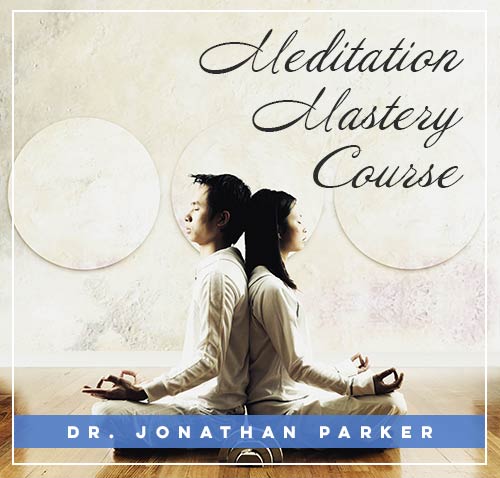Mindful Education: Teaching with Presence

Hey there, amazing readers! 🖐️ Just a quick note: yes, we know there are a lot of ads here. Trust us, we get it—it’s not the prettiest look, but they help us keep this blog alive and kicking. Those pesky little ads cover the costs of all the behind-the-scenes magic, from hosting and tech stuff to creating content we hope you’ll love.
We’re committed to delivering quality posts, and your support (even just sticking around despite the ads) means everything to us. So, bear with us, and thanks for helping us keep the good vibes rolling. Now, on to the fun stuff! 😉
TRANSLATE BUTTON AT THE END OF THE ARTICLE
A Quick Overview
In recent years, the concept of mindful education has gained significant attention in the field of teaching.
Mindful education focuses on cultivating awareness, attention, and compassion in both educators and students.
By incorporating mindfulness practices into the classroom, teachers can create a more focused, empathetic, and supportive learning environment.
This approach not only enhances academic performance but also promotes emotional well-being and mental health.
In this article, we will delve into the various aspects of mindful education, exploring its benefits, techniques for implementation, challenges, and successful case studies.
Introduction to Mindful Education
Mindful education is an approach to teaching that integrates mindfulness practices into the classroom setting.
It involves cultivating present moment awareness, non-judgmental observation, and compassion among educators and students.
By incorporating mindfulness techniques such as deep breathing exercises, guided meditations, and body scans, teachers can create a more attentive and empathetic learning environment.
This approach not only helps students develop better focus and concentration but also enhances their emotional regulation and interpersonal skills.
Understanding the Concept of Mindful Teaching
Mindful teaching entails being fully present in the classroom, engaging with students in a compassionate and non-reactive manner.
It involves cultivating a sense of awareness of one’s thoughts, emotions, and reactions while interacting with students.
Mindful teachers strive to create a safe and supportive space for learning, where students feel seen, heard, and valued.
By practicing mindfulness techniques themselves, educators can model these behaviors for their students and create a more harmonious and connected classroom.
Benefits of Teaching with Presence
Teaching with presence offers a myriad of benefits for both educators and students.
Some of the key advantages include:
Improved focus and attention: Mindful teaching techniques help students develop better concentration and attentional control.
Enhanced emotional regulation: By practicing mindfulness, students can learn to manage their emotions more effectively.
Increased empathy and compassion: Mindful education fosters a sense of connection and understanding among students and teachers.
Reduced stress and anxiety: Mindfulness practices can help alleviate feelings of stress and anxiety in both educators and students.
Improved academic performance: By creating a calm and focused learning environment, mindful teaching can enhance students’ academic achievement.
Techniques for Implementing Mindful Education
There are various techniques that educators can use to integrate mindfulness into their teaching practice.
Some effective strategies include:
Starting each class with a mindful breathing exercise to center students and cultivate present moment awareness.
Incorporating short mindfulness breaks throughout the day to help students re-focus and stay grounded.
Using guided meditations and body scans to promote relaxation and stress relief.
Encouraging students to practice mindful listening and compassionate communication with their peers.
Creating a mindful classroom environment through the use of calming colors, soft lighting, and comfortable seating arrangements.
Creating a Mindful Learning Environment
Creating a mindful learning environment involves setting the tone for the classroom through intentional design and practices.
Educators can foster a sense of mindfulness by:
Establishing clear expectations for behavior and communication that promote respect and empathy.
Encouraging open dialogue and reflection on emotions and experiences.
Incorporating nature elements such as plants or natural light to create a calming atmosphere.
Providing opportunities for movement and physical activity to help students stay grounded and present.
Modeling mindfulness practices by engaging in them alongside students and demonstrating their benefits.
Cultivating Mindfulness in Students
To cultivate mindfulness in students, educators can incorporate various activities and exercises into their teaching practice.
Some effective ways to promote mindfulness among students include:
Teaching mindful breathing techniques to help students regulate their emotions and reduce stress.
Encouraging students to practice gratitude journaling to foster a sense of appreciation and positivity.
Guiding students in mindful eating exercises to promote awareness of their senses and eating habits.
Leading students in mindful movement activities such as yoga or stretching to promote physical well-being.
Providing opportunities for students to engage in mindfulness practices outside of the classroom, such as nature walks or community service projects.
The Role of Self-Care for Educators
Self-care is an essential component of mindful teaching, as educators must take care of themselves in order to effectively support their students.
Some key aspects of self-care for educators include:
Prioritizing personal well-being through practices such as exercise, healthy eating, and adequate sleep.
Setting boundaries and managing workload to prevent burnout and overwhelm.
Engaging in mindfulness practices themselves to cultivate their own sense of presence and awareness.
Seeking support from colleagues, mentors, or mental health professionals when needed.
Reflecting on their teaching practice and making adjustments to align with their values and priorities.
Overcoming Challenges in Mindful Teaching
While mindful teaching offers numerous benefits, educators may encounter challenges in implementing mindfulness practices in the classroom.
Some common obstacles include:
Resistance from students who may be unfamiliar with or skeptical of mindfulness techniques.
Time constraints that make it difficult to incorporate mindfulness practices into the curriculum.
Lack of training or resources for educators to effectively implement mindfulness in their teaching.
Difficulty in maintaining consistency with mindfulness practices amidst competing demands and distractions.
Skepticism or lack of support from school administration or parents regarding the benefits of mindful education.
Case Studies of Successful Mindful Education Programs
Several schools and educational institutions have successfully implemented mindful education programs with positive results.
For example:
The Inner Kids Program in California integrates mindfulness practices into the curriculum to promote social-emotional learning and stress reduction.
The MindUP program developed by the Goldie Hawn Foundation teaches students mindfulness techniques to improve focus, empathy, and emotional regulation.
The Holistic Life Foundation in Baltimore uses yoga and mindfulness practices to support at-risk youth in developing coping skills and resilience.
The Mindful Schools program offers online resources and training for educators to incorporate mindfulness practices into their teaching.
Evaluating the Impact of Mindful Education
Assessing the impact of mindful education programs involves measuring various outcomes related to academic performance, emotional well-being, and social skills.
Some ways to evaluate the effectiveness of mindful education initiatives include:
Conducting pre- and post-assessments of students’ attention, behavior, and emotional regulation.
Collecting feedback from educators, students, and parents on their experiences with mindfulness practices.
Tracking academic performance data to identify any improvements in student achievement.
Observing changes in school climate, such as reduced incidents of bullying or improved relationships among students.
Collaborating with researchers and experts in the field of mindfulness to conduct more rigorous evaluations of program outcomes.
Resources for Further Learning and Development
For educators interested in incorporating mindful education practices into their teaching, there are numerous resources available to support their professional development.
Some helpful resources include:
Books on mindful teaching and education, such as "The Mindful Teacher" by Elizabeth MacDonald and Dennis Shirley.
Online courses and webinars on mindfulness in education, offered by organizations like Mindful Schools and the Center for Mindful Education.
Mindfulness apps and guided meditations for educators and students, such as Headspace or Calm.
Professional development workshops and conferences focused on mindfulness and social-emotional learning in schools.
Peer support groups and communities of practice where educators can share experiences and best practices for mindful teaching.
Conclusion: Embracing Mindful Education in the Classroom
In conclusion, mindful education offers a holistic approach to teaching that benefits both educators and students.
By cultivating presence, awareness, and compassion in the classroom, teachers can create a supportive and nurturing learning environment that promotes academic success and emotional well-being.
Through mindfulness practices, educators can help students develop essential skills such as focus, empathy, and self-regulation, preparing them to navigate the complexities of the modern world with resilience and confidence.
By embracing mindful education in the classroom, educators can unlock the secrets to creating a more harmonious and connected community of learners.

The Enlightenment Journey is a remarkable collection of writings authored by a distinguished group of experts in the fields of spirituality, new age, and esoteric knowledge.
This anthology features a diverse assembly of well-experienced authors who bring their profound insights and credible perspectives to the forefront.
Each contributor possesses a wealth of knowledge and wisdom, making them authorities in their respective domains.
Together, they offer readers a transformative journey into the realms of spiritual growth, self-discovery, and esoteric enlightenment.
The Enlightenment Journey is a testament to the collective expertise of these luminaries, providing readers with a rich tapestry of ideas and information to illuminate their spiritual path.
Our Diverse Expertise 🌟
While our primary focus is on spirituality and esotericism, we are equally passionate about exploring a wide range of other topics and niches 🌍📚. Our experienced team is dedicated to delivering high-quality, informative content across various subjects ✨.
To ensure we provide the most accurate and valuable insights, we collaborate with trusted experts in their respective domains 🧑🏫👩🏫. This allows us to offer well-rounded perspectives and knowledge to our readers.
Our blog originally focused on spirituality and metaphysics, but we’ve since expanded to cover a wide range of niches. Don’t worry—we continue to publish a lot of articles on spirituality! Frequently visit our blog to explore our diverse content and stay tuned for more insightful reads.





















